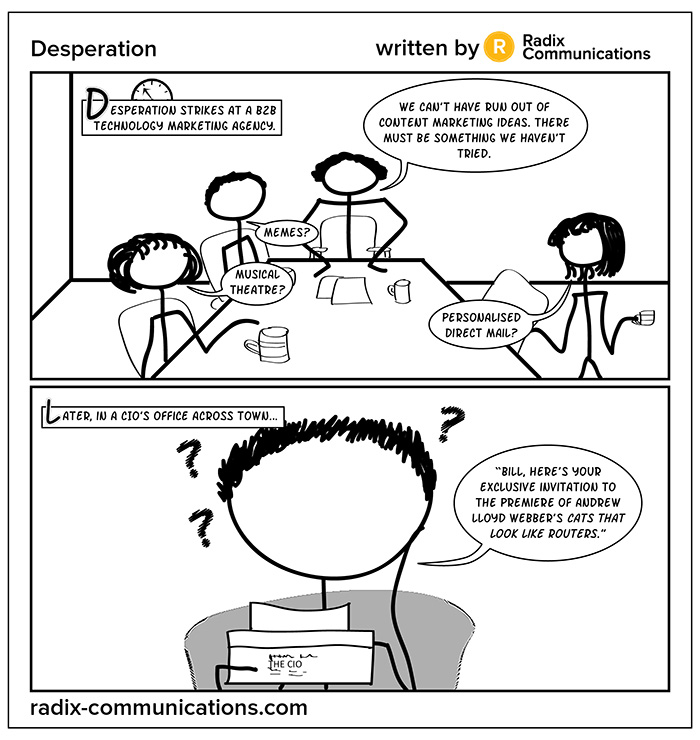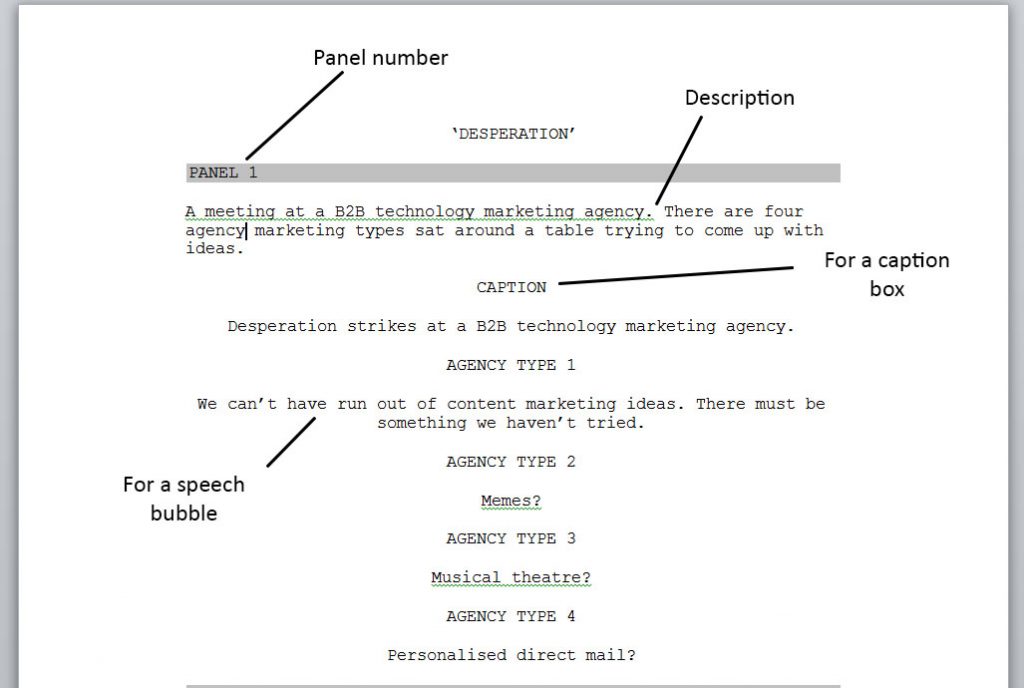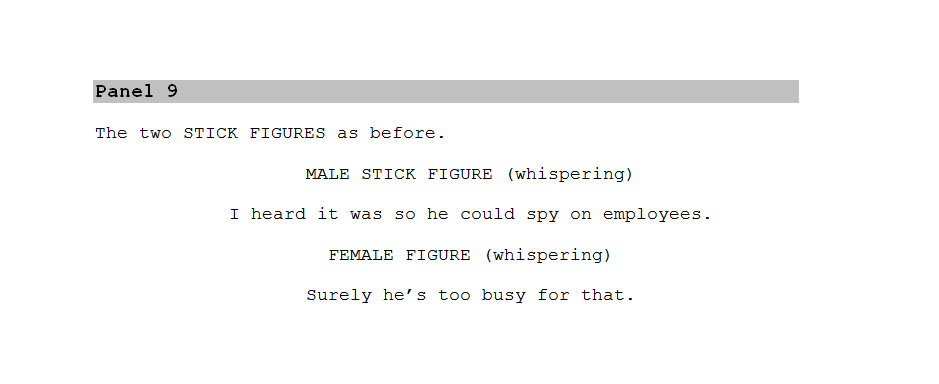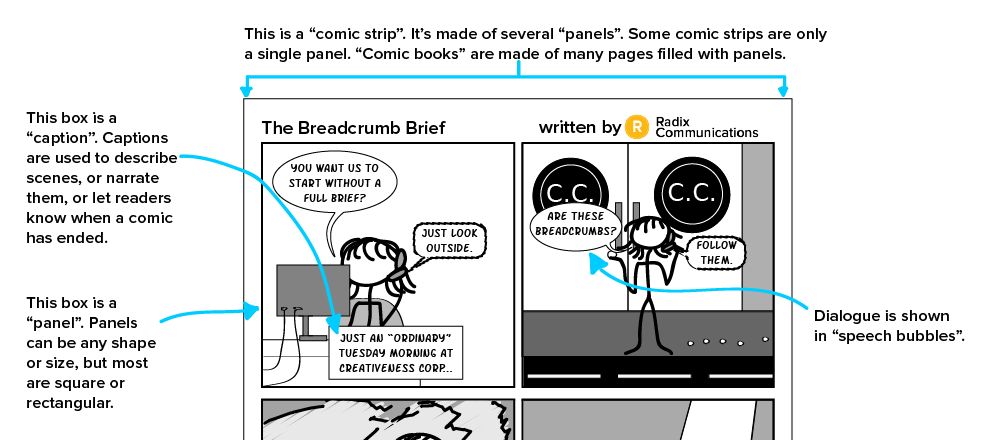Apart from the recent resurgence of comics as entertainment, Joe Pulizzi, founder of the Content Marketing Institute, demonstrates in his book Epic Content Marketing that comics are a valid form of marketing content. Pulizzi points out that:
“For instructional content, comics may be one of the very best tactics available.”
I feel that comic books and strips are a format that is easy for readers to interact with and helps brands to focus on telling stories that their audience can relate to.

Once you’ve decided on subject matter and the length of your comic, you are ready to approach writing your comic. Here are five tips to help you get started writing your own scripts for comic books and strips, based on my experience of working with comic book artists:
5. Be consistent in how you format your comic script.
Start with what page number it is (comic books only) > then the panel/frame number > the description of what is happening in the panel > any captions > any sound effects > any speech bubbles.

4. Don’t have more than 25 words in a speech bubble.
More than that and it begins to be quite difficult to accommodate it in the panel without covering up lots of artwork. You can ignore this if a) the character speaking is meant to be characterised as longwinded or b) there’s not meant to be much art in the panel in the first place.
3. You don’t have to dictate every niggling detail.
When you introduce a location or a character for the first time, give a brief overview of what they look like and in the case of a character maybe also mention what their occupation is. But in subsequent panels just let the artist know the important things like where and when the panel is set, which characters are in a panel, their emotional state and any actions they might be doing.
And if a panel is almost the same as the previous one: say so.
2. Always write a panel description as if it’s a moment of frozen time.
You can’t have a character start doing one thing in a panel and then switch to doing something else; this isn’t a film or TV script. If a character starts a panel sitting behind a desk they cannot in that same panel jump away from their desk.
1. Show rather than tell.
Comics are a visual medium. If you have your characters constantly describing things in speech bubbles or you overly rely on captions to set the scene then it’s going to make for a very boring comic. This also means that you should take advantage of speech bubbles to help demonstrate how a character is speaking if they’re not speaking normally (they’re whispering, scared or so on). Put a minor note like “whispering” in brackets beside the speech bubble in the script.

Get a monthly delivery of B2B copywriting tips to your inbox, by signing up to our monthly insights email.
And if you have any questions you’d like to ask me about writing comic scripts, please tweet your questions to @radixcom.


